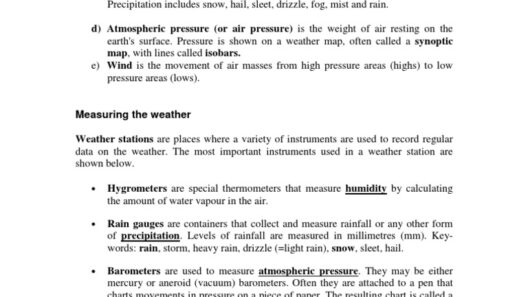The climate characterized by warm, humid summers and cool winters is classified as temperate maritime or temperate oceanic. This climate is notably prevalent in various regions across the globe, particularly along coastal areas where the ocean has a moderating effect on temperature ranges. Cities such as Seattle in the United States, Lisbon in Portugal, and parts of New Zealand exemplify this climate type. The juxtaposition of warm summers and cool winters creates a unique and diverse ecosystem that influences everything from agriculture to urban planning.
Warm, humid summers are a hallmark of this climate, typically featuring average temperatures ranging from the mid-70s to mid-80s Fahrenheit. The significant humidity can result from the nearby ocean, which evaporates water and raises moisture levels in the air. This humidity can exacerbate the perceived temperature but also plays a crucial role in sustaining robust vegetation. The lush greenery and diverse flora found in temperate climates provide a striking contrast to the arid landscapes characterizing other climate types.
On the other hand, winter months usher in cooler temperatures, often dipping into the 30s and 40s Fahrenheit. This season is considerably milder compared to continental climates, where winters can be brutally frigid. The relatively moderate winters in temperate regions can lead to a longer growing season, allowing a wide array of crops to flourish. Farmers in these areas can grow various fruits and vegetables, taking advantage of the climate’s conducive nature.
The moderating effect of oceanic currents cannot be overstated. In temperate regions, warm ocean currents can elevate air temperatures, thereby mitigating the extremes typically found inland. For example, the Gulf Stream affects the climate of Western Europe, resulting in milder winters than those experienced in other parts of the continent at similar latitudes. This phenomenon is fascinating not just for its immediate effects on weather but also for its implications on biodiversity and ecological interactions.
Beyond agriculture, this climate’s effects extend to forestry. The combination of ample rainfall and moderate temperatures allows for the proliferation of deciduous and evergreen trees. Forests composed of oak, maple, and pine can thrive in these settings, creating rich habitats for wildlife. This biodiversity becomes a focal point for conservation efforts, as temperate forests are invaluable for carbon sequestration, soil conservation, and providing clean air.
Urban development in these climates also reflects an intimate relationship with the environment. Cities typically integrate green spaces within their infrastructures, recognizing the value that parks, gardens, and urban forests bring to urban populations. These areas serve essential roles in enhancing air quality, providing recreational opportunities, and promoting mental well-being among residents. The layout and architecture in regions with this climate often consider factors like wind patterns and sunlight exposure, maximizing energy efficiency.
Climate change poses a significant threat to the stability of temperate regions. Increased temperatures and shifting precipitation patterns can lead to unpredictable weather events. For instance, what once constituted a reliable winter may become unpredictable, resulting in changes to local ecosystems and challenges for farmers who depend on consistent weather patterns. Moreover, the combination of elevated summer temperatures and humidity can exacerbate the heat island effect in urban settings, further complicating public health efforts.
Adapting to these changes is imperative. Communities in temperate climates are exploring various strategies such as sustainable agriculture practices, habitat restoration, and urban redesigns that focus on climate resilience. These endeavors highlight a broader movement towards sustainability, recognizing that humanity’s fate is intertwined with the health of the environment. Local initiatives aiming for carbon neutrality, improved public transportation, and renewable energy sources are increasingly becoming the norm rather than the exception.
Moreover, the cultural aspects of areas with this climate offer a captivating study. The temperate zone has historically been home to various civilizations that have adapted their lifestyles to this climate’s quirks. Festivals celebrating seasonal changes not only reflect the agricultural calendar but also serve as a testimony to the community’s connection to nature.
In summation, the climate that offers warm, humid summers and cool winters fosters a rich tapestry of life and human activity. The intricate relationships between climate, ecology, agriculture, and urban settings illustrate how climate influences almost every facet of existence. Communities within these regions face both challenges and opportunities as they navigate the complexities presented by changing climatic conditions.
Understanding the nuances of this climate type can inspire action towards preserving its unique characteristics. The commitment to sustainability and resilience in the face of climate change will determine not only the future of these temperate regions but also the well-being of their inhabitants. As concerns about global warming intensify, knowledge sharing and collaborative efforts will be crucial in fostering adaptable and thriving communities in warm, humid summers and cool winters.







